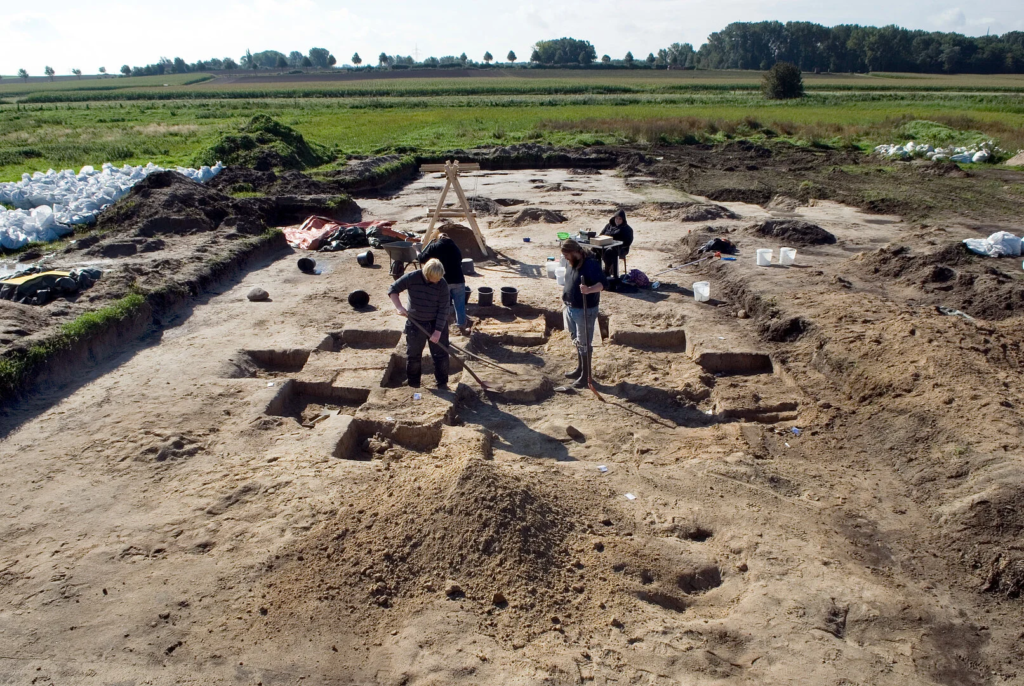A groundbreaking study sheds light on the rich dietary practices of Neolithic farmers in Scandinavia, revealing a blend of innovation and adaptation that sustained communities for over 5,000 years.
Key Points at a Glance
- Researchers analyzed food remains from Neolithic Scandinavian pottery, uncovering a mix of plant-based and marine-derived foods.
- Evidence suggests a blend of farming, fishing, and foraging as part of the early farmers’ subsistence strategies.
- The findings challenge previous assumptions about the simplicity of early agricultural diets.
- Insights from the study provide a deeper understanding of how Neolithic communities adapted to their environments.
The Neolithic era marked a transformative period in human history, with the advent of farming reshaping societies across Europe. Yet, new research indicates that Scandinavian farmers of this time were not solely reliant on agriculture. Instead, their diets incorporated a diverse range of resources, showcasing their ingenuity and adaptability in an era of significant environmental and societal change.
A team of researchers recently examined food residues in ceramic pots dating back to around 4,000 BCE. By analyzing these remnants, they uncovered traces of cereals like barley and wheat alongside marine resources such as fish and shellfish. This combination highlights a surprisingly complex food web, blending cultivated crops with wild-sourced foods.
“Our findings suggest that early farmers in Scandinavia maintained a balanced diet that combined the best of both agricultural and foraging worlds,” said the study’s lead author, Dr. Ingrid Bergstrom of Uppsala University. “This hybrid strategy would have been crucial for their survival in the challenging northern climates.”

The evidence points to a society that did not abandon traditional foraging practices entirely when transitioning to farming. Instead, these communities strategically integrated cultivated crops with resources from their natural surroundings. Fish and shellfish provided essential nutrients like omega-3 fatty acids, while cereals offered a reliable source of calories and were likely used to make porridge or bread.
Dr. Bergstrom and her team hypothesize that this dietary strategy may have been driven by environmental constraints. The cold, harsh Scandinavian climate made farming more challenging, limiting the variety of crops that could be grown. Meanwhile, the abundance of coastal and inland waterways provided a consistent supply of fish, mollusks, and other aquatic resources.
“It’s fascinating to see how these communities adapted to their unique environment,” said Dr. Bergstrom. “They were not merely surviving—they were thriving by combining multiple food sources.”
The study challenges long-standing assumptions that early agricultural societies relied predominantly on their crops. Instead, it suggests that a more integrated approach to subsistence was common. This revelation has significant implications for our understanding of Neolithic culture and adaptation.
“For a long time, we viewed the shift to farming as a dramatic and complete departure from earlier ways of life,” said co-author Dr. Lars Olsson, an archaeologist specializing in Scandinavian prehistory. “However, this evidence shows that the transition was more nuanced. These farmers were pragmatic, utilizing every resource available to them.”
The pottery fragments also revealed evidence of advanced cooking techniques, such as slow boiling and fermentation. These methods not only improved the taste of food but also increased its nutritional value and shelf life, offering further proof of the sophistication of these ancient communities.
Understanding the dietary habits of Neolithic Scandinavian farmers sheds light on how early humans adapted to their environments. It also provides valuable lessons for modern societies, particularly regarding the importance of dietary diversity and sustainable resource use.
“We can learn a great deal from the resilience and ingenuity of these ancient communities,” said Dr. Bergstrom. “Their ability to integrate multiple food sources is a model for sustainable living, especially as we face our own environmental challenges.”
This study adds to a growing body of research emphasizing the complexity of prehistoric life. As more discoveries emerge, the simplistic view of early agricultural societies is giving way to a richer, more dynamic understanding of our ancestors and their relationship with the natural world.